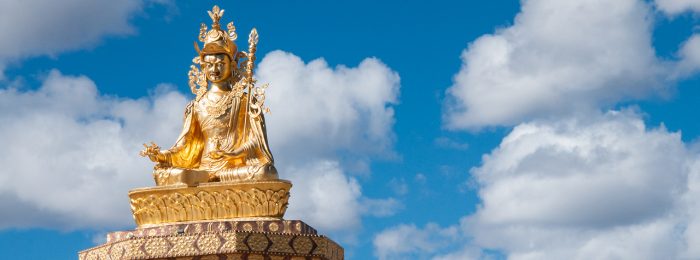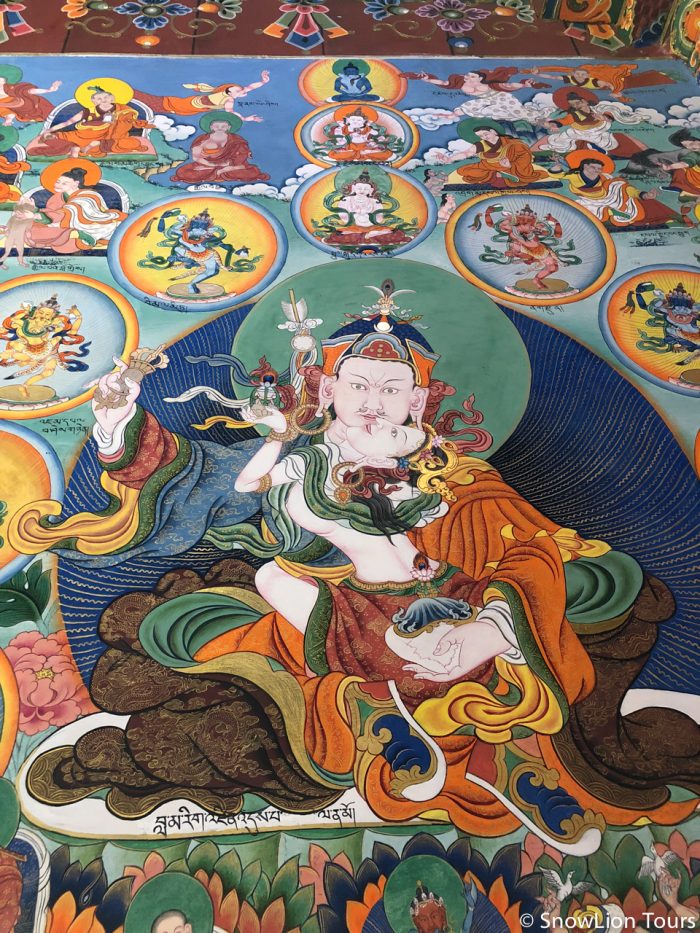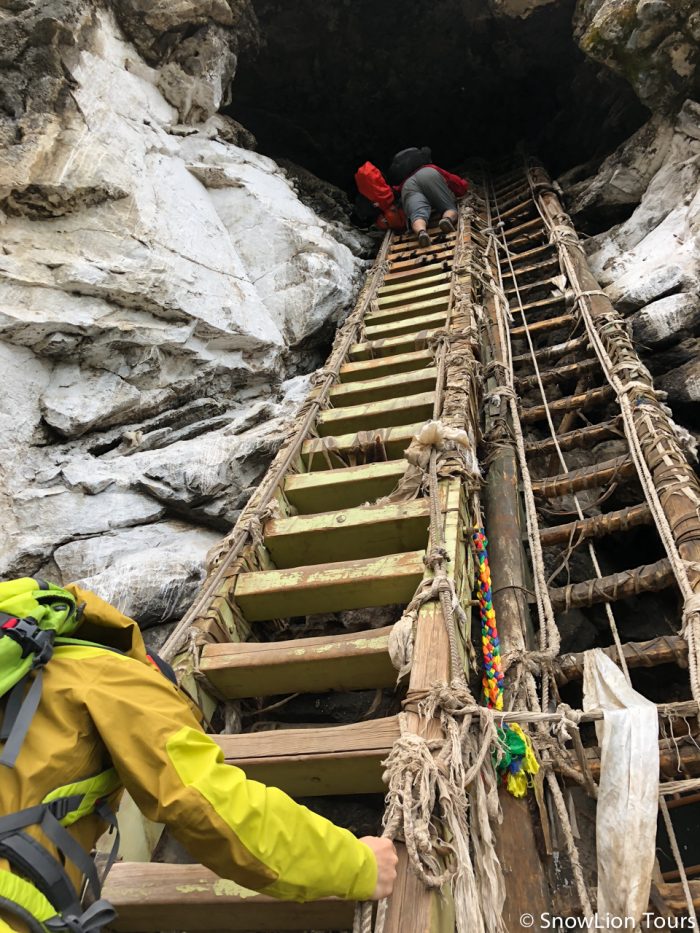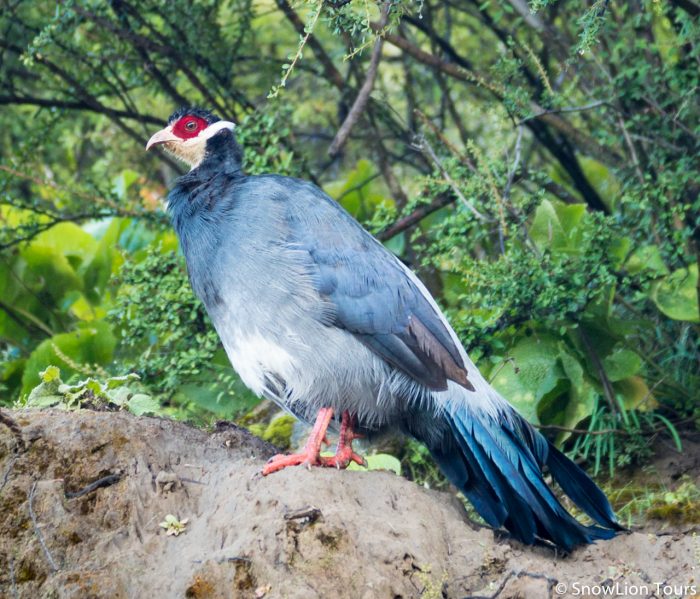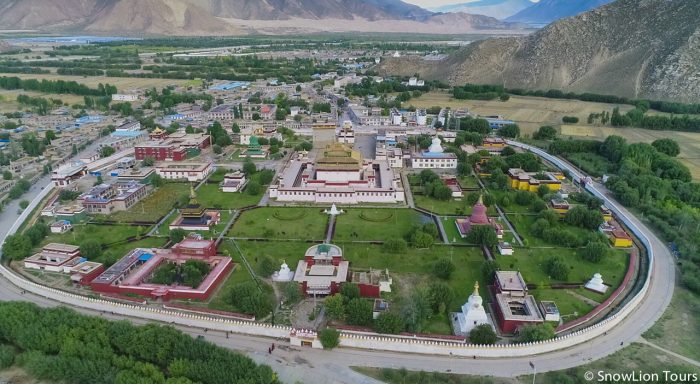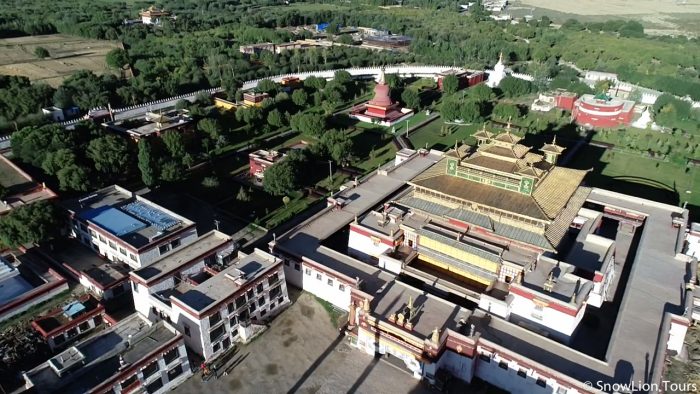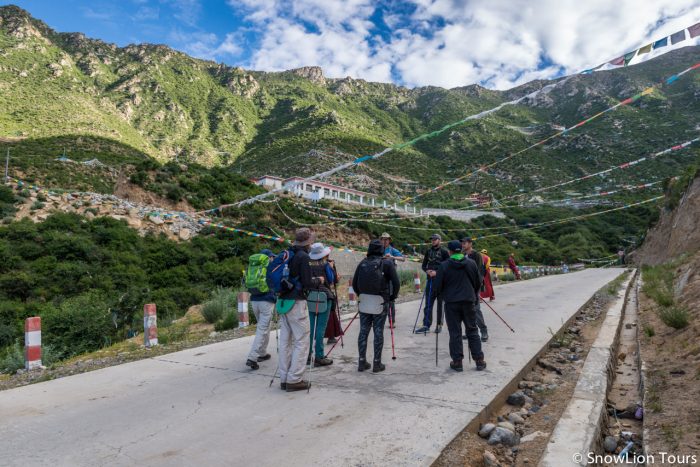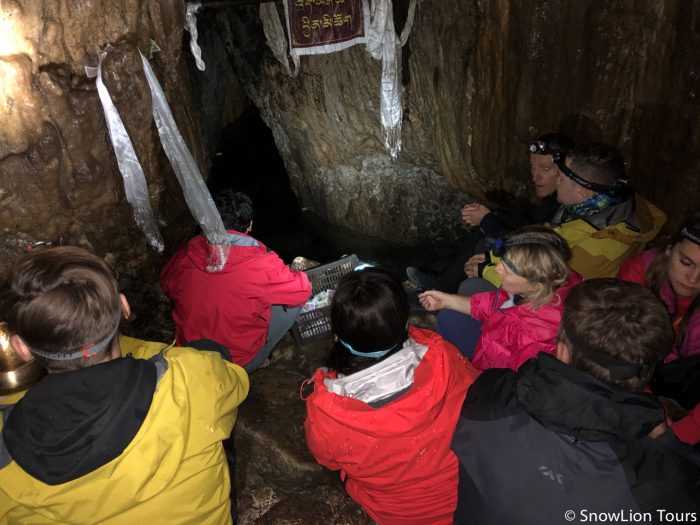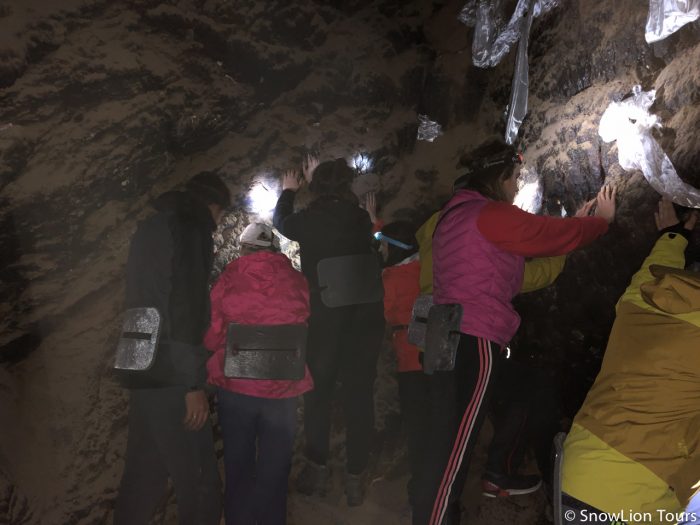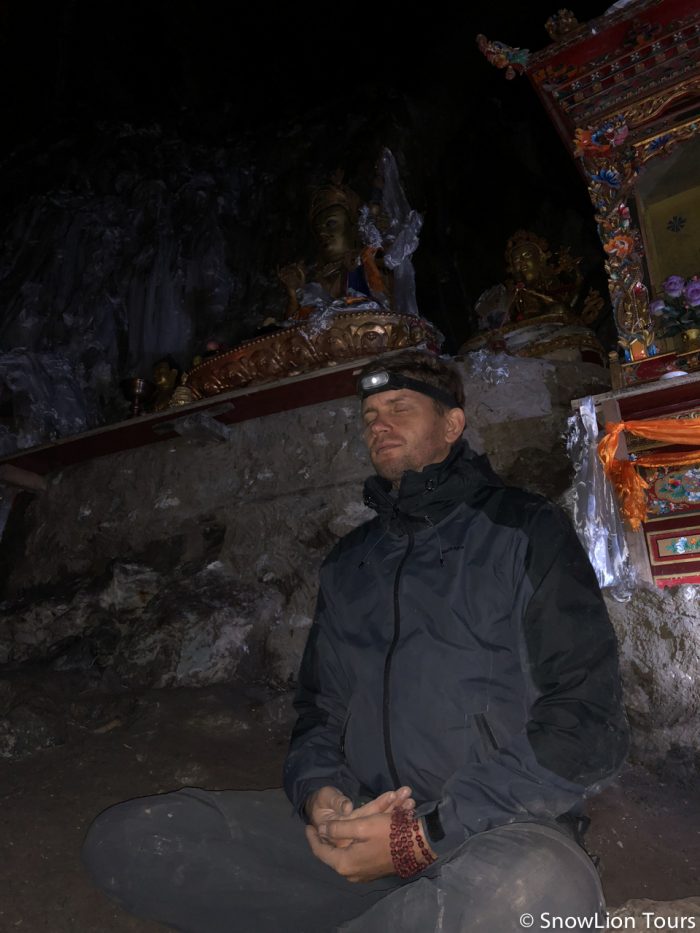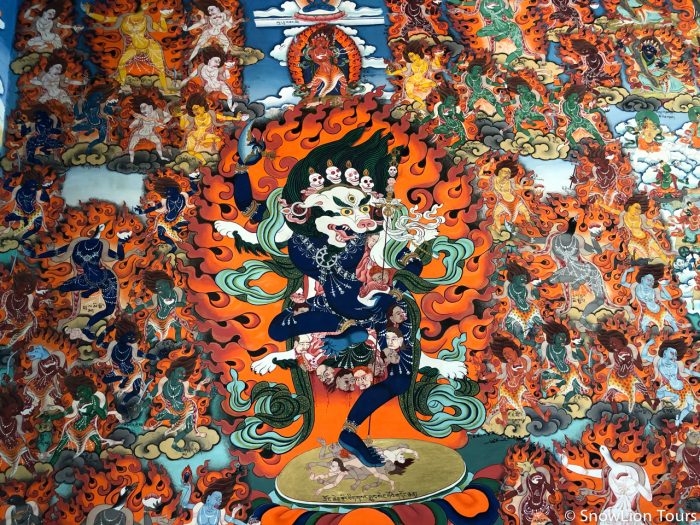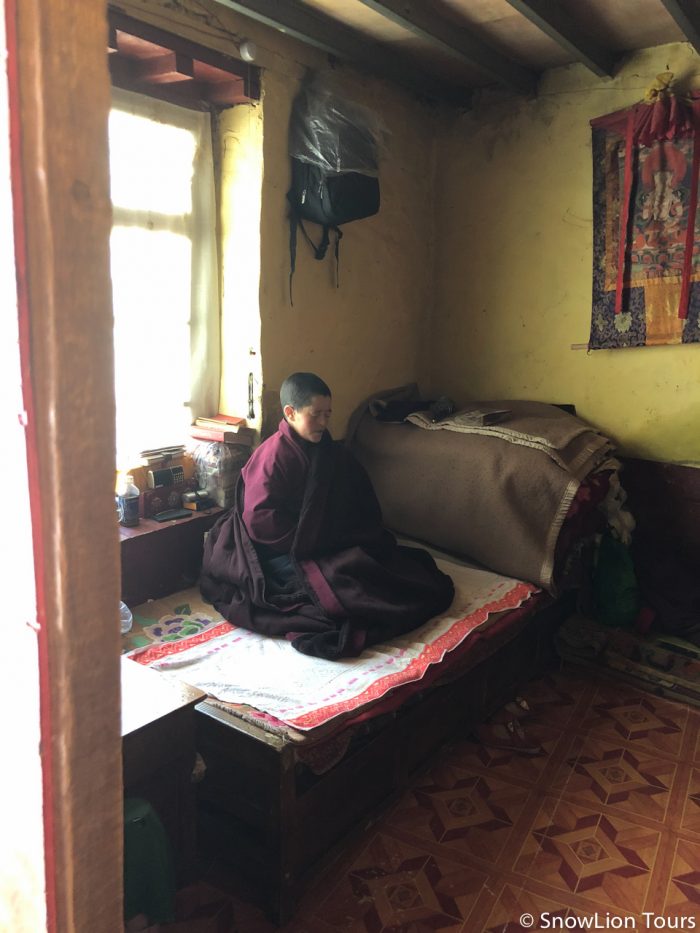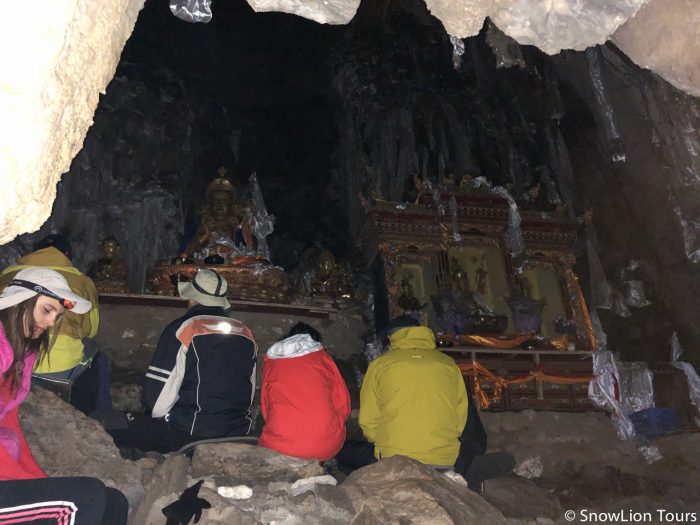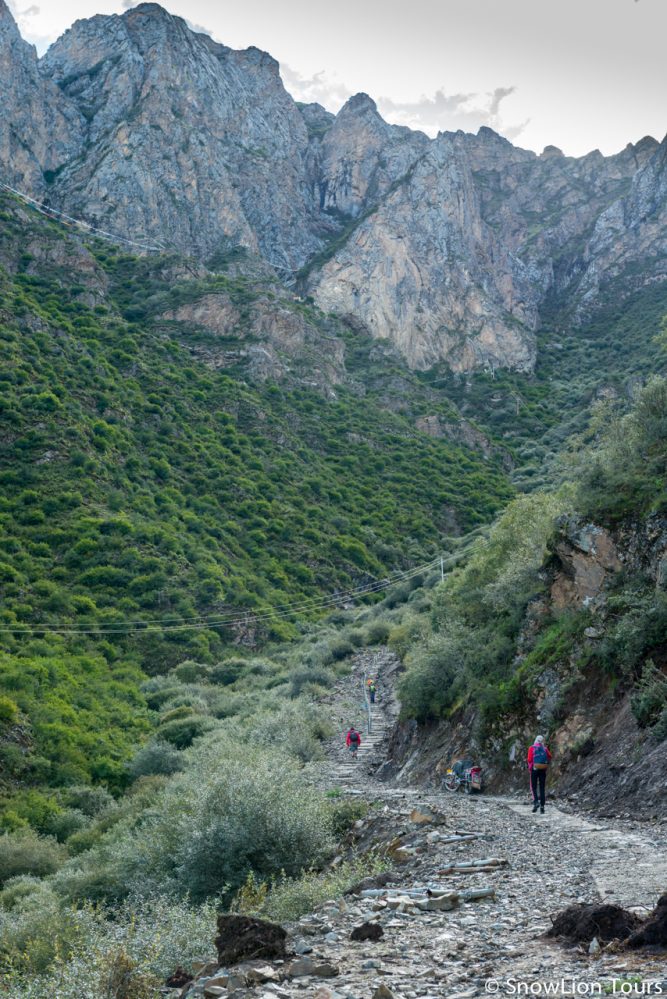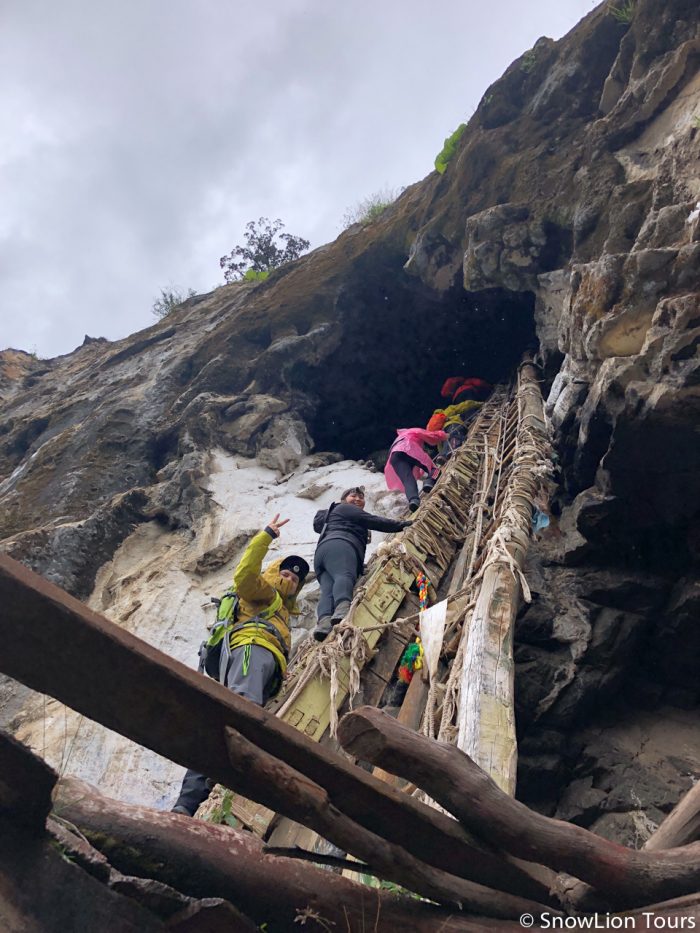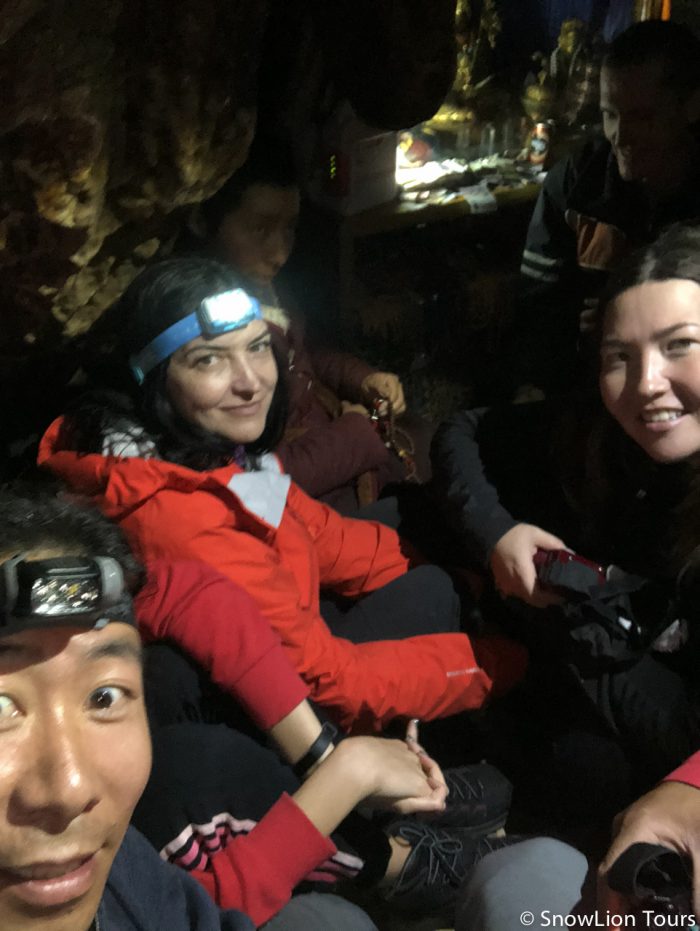This is our pure spiritual and meditation tour we are offering. Within this duration of the tour, you can see, meditate and spiritually experience some of the hidden monasteries and powerful places including caves such as Drakyangdzong hermitage caves, Dzong Kumbum caves, Chimphu hermitage caves, Yarlung Sheldrak caves etc. which are associated with Master Padmasambhava and Kamdro Yeshi Tsogyel as well as Longchenpa. These places are not well known in travel books but highly valued by our Tibetan society. We hope by joining this unique tour, your meditation skills and techniques are more refined and your spiritual experience are more awaken and inspired.
Route: Lhasa ⇒ Shoton Festival ⇒ Tsethang ⇒ Tsurphu Monastery ⇒ Namtso Lake ⇒ Reting Monastery ⇒ Tedrum Nunnery ⇒ Drak Yerpa Meditation Caves ⇒Lhasa
Highlights
- Meditation in Tibet
- Guru Rinpoche’s caves
- Shoton Festival
- Hiking, walking and crawling
Details
- 15-day trip begins in Lhasa and ends in Lhasa, Tibet
- 14 nights in hotels and guesthouses
- Altitude from 1800-4200 m
Tour Costs
- E-mail us for an exact quote
- See Prices & Booking for more information
Departures
- Any time in a year
Day 1: Arrive in Lhasa. (Hotel in Lhasa 3*)
Welcome to Lhasa! Transfer to your hotel and get settled. You can wonder around the town on your own or rest at hotel to acclimatization.
Day 2: Lhasa (Jokhang, Barkhor, Tsanggu Nunnery, and Nunnery Tea House, Ramoche Temple) (Hotel in Lhasa 3*)
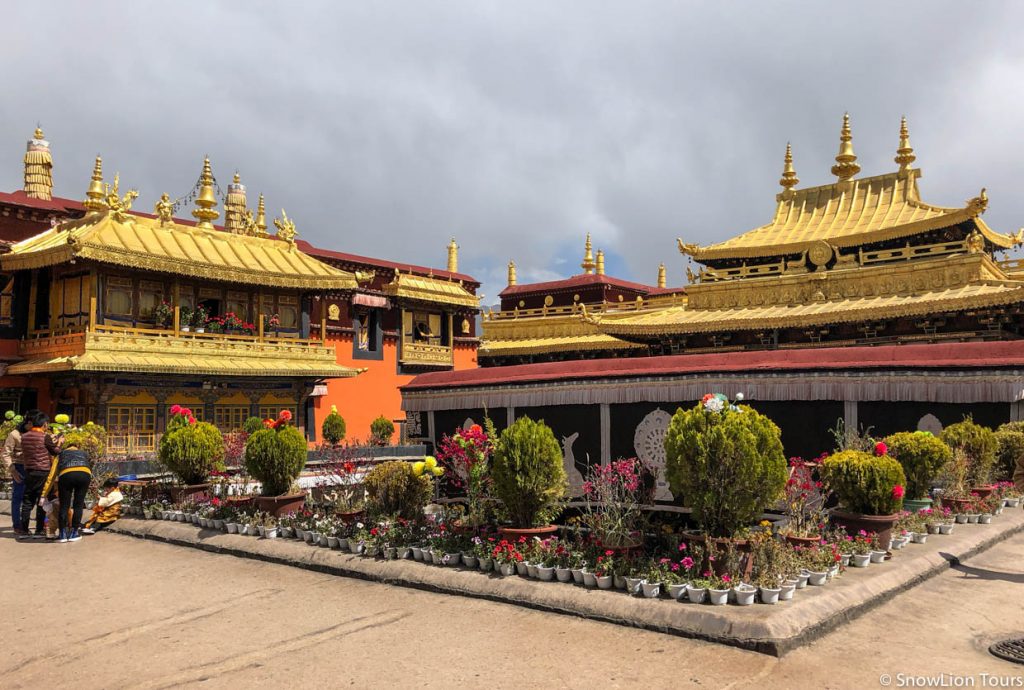
In the morning, visit the Jokhang Temple, which is located in Barkhor square in Lhasa. The Barkhor is a famous shopping street filled with goods and souvenirs from Tibet, Nepal, and India. Pilgrims from all over Tibet visit the Barkhor to pray in front of the Jokhang. Then we will make a short visit to Ani Tsanggu Nunnery, a nunnery located next to Jokhang Temple and host more than 100nuns. The nunnery is very small in size but the very important historical site as the King Songtsam Ganpo did his daily meditation in this nunnery, you can still see his meditation cave behind the kitchen. Afterward, visit Ramoche, a small monastery located in the city center.
Day 3: Shoton Festival at Drepung Monastery – Norbulinka Palace
Shoton Festival or Tibet Yogurt Festival is a week-long festival, the main day will be on the first day at Drepung Monastery. Monks at the Drepung Monastery will display Giant Thangka and chanting mantras. Thousands of Tibetans and tourists all over Tibet and other places are getting here. Afterward, Visit Drepung Monastery. one of the three most famous monasteries in Lhasa. Drepung is located just outside Lhasa on Gambo Utse Mountain. After the first day, Picnics and operas are held in parks, particularly under the trees at Norbulingka park. Bonfires at night.
Day 4: Lhasa – visit Potala Palace and drive to Drak Yangzong (Overnight in a Drak Yanddzong guesthouse).
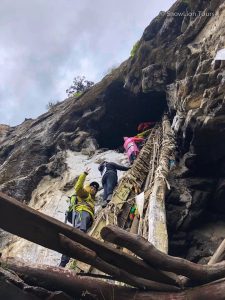 In the morning, visit the Potala Palace, the greatest monumental structure in all of Tibet. Afterward, drive to Drak Yangdzong which takes about 3 hours. Once we arrive at the nunnery below the Drak Yangdzong cave, we can have lunch at the nunnery restaurant, this is a vegetarian restaurant offers bread, rice, vegetables, and noodles. Afterward, we will climb up 2 hours Drak Yangdzong Caves, A cave complexes of Drak Yangdzong and Dzong Kumbum are a maze interconnecting limestone passages and natural caverns, is associated with Padmasambhava and Kamdro Yeshi Tsogyel, whose Buddha-body is represented by these caves. According to tradition, Padmasambhava sent two of his newly ordained disciples, Nubchen Sanggye Yeshe, and Nanam Dorje Dudjom to meditate at the caves. The site was also an important place for treasure revelation, with both Padmasambhava and Yeshe Tsogyal both concealing treasures there.
In the morning, visit the Potala Palace, the greatest monumental structure in all of Tibet. Afterward, drive to Drak Yangdzong which takes about 3 hours. Once we arrive at the nunnery below the Drak Yangdzong cave, we can have lunch at the nunnery restaurant, this is a vegetarian restaurant offers bread, rice, vegetables, and noodles. Afterward, we will climb up 2 hours Drak Yangdzong Caves, A cave complexes of Drak Yangdzong and Dzong Kumbum are a maze interconnecting limestone passages and natural caverns, is associated with Padmasambhava and Kamdro Yeshi Tsogyel, whose Buddha-body is represented by these caves. According to tradition, Padmasambhava sent two of his newly ordained disciples, Nubchen Sanggye Yeshe, and Nanam Dorje Dudjom to meditate at the caves. The site was also an important place for treasure revelation, with both Padmasambhava and Yeshe Tsogyal both concealing treasures there.
Note: accommodation is extremely basic.
Day 5: Drak Yangdzong – Dzong Kumbum – Yeshi Tsogyle Lake – Samye Monastery. Visit Hepori in the evening. (Samye monastery hotel)
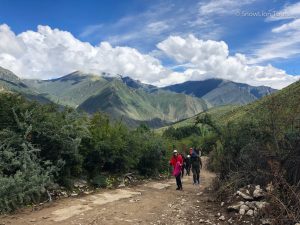 If you can get up early, you may join the puja or morning prayer session at the nunnery. Then after having breakfast, we drive 1 hour to Dzong Kumbum. Again this is a 1.5-hour hike. The two main caves are Guru Rinpoche Cave and Cave for Guru Rinpoche’s blessed water. Then drive down to the village and stop by the Kamdro Yeshi Tsogyel Lake. There is a big tree which represents the mother of Yeshi Tsogyel as she drank milk from the tree rather than from real mother after she was born. It is also said to be seen your future reflection in the lake if you can focus enough. Afterward, we drive to Samye Monastery, which is widely believed to be the first Buddhist monastery in Tibet with a history of over 1,200 years. The monastery grounds are laid out in the shape of a mandala and represent an ideal universe as described in Buddhist scriptures. Visit Hepori in the afternoon. Hepori will offer an incredible bird’s eye view of the Samye monastery complexes.
If you can get up early, you may join the puja or morning prayer session at the nunnery. Then after having breakfast, we drive 1 hour to Dzong Kumbum. Again this is a 1.5-hour hike. The two main caves are Guru Rinpoche Cave and Cave for Guru Rinpoche’s blessed water. Then drive down to the village and stop by the Kamdro Yeshi Tsogyel Lake. There is a big tree which represents the mother of Yeshi Tsogyel as she drank milk from the tree rather than from real mother after she was born. It is also said to be seen your future reflection in the lake if you can focus enough. Afterward, we drive to Samye Monastery, which is widely believed to be the first Buddhist monastery in Tibet with a history of over 1,200 years. The monastery grounds are laid out in the shape of a mandala and represent an ideal universe as described in Buddhist scriptures. Visit Hepori in the afternoon. Hepori will offer an incredible bird’s eye view of the Samye monastery complexes.
Day 6: Samye monastery in the morning – hike to Chimpu Hermitage – back to Samye (Samye monastery hotel)
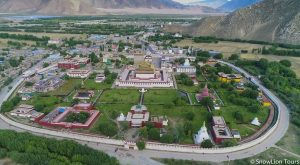 Hike to Chimphu Hermitage in the morning. This mountain retreat above Samye is revered as the sacred place of Guru Rinpoche’s speech. This is where he taught the Twenty-Five Disciples and where numerous disciples had profound realizations. Today, there are a hundred or more yogis, men and women, living there in retreat. As we hike through Chimphu, there are many occasions to meet with them and make personal offerings. It’s about 2-hour hike one way. Afterward, come back to Samye. If time allows, you can walk around the monastery on your own.
Hike to Chimphu Hermitage in the morning. This mountain retreat above Samye is revered as the sacred place of Guru Rinpoche’s speech. This is where he taught the Twenty-Five Disciples and where numerous disciples had profound realizations. Today, there are a hundred or more yogis, men and women, living there in retreat. As we hike through Chimphu, there are many occasions to meet with them and make personal offerings. It’s about 2-hour hike one way. Afterward, come back to Samye. If time allows, you can walk around the monastery on your own.
Day 7: Samye to Yamalung – Tsethang (Hotel in Tsethang 3*)
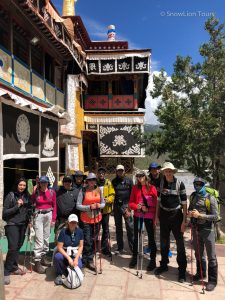 In the morning drive to the remote Yamalung hermitage. which is located in 20km from Samye monastery. Padmasambhava, also known as Guru Rinpoche, spent his meditation time in this hermitage. It is said that Padmasambhava received empowerment from the deity Amitayus. It is also known that the fifth Dalai Lama had spent 14 months of meditation in this hermitage. As a result, Yamalung Hermitage is an ideal place for offering blessings and prayers. Afterward, drive to Tsethang. The third largest city in Central Tibet.
In the morning drive to the remote Yamalung hermitage. which is located in 20km from Samye monastery. Padmasambhava, also known as Guru Rinpoche, spent his meditation time in this hermitage. It is said that Padmasambhava received empowerment from the deity Amitayus. It is also known that the fifth Dalai Lama had spent 14 months of meditation in this hermitage. As a result, Yamalung Hermitage is an ideal place for offering blessings and prayers. Afterward, drive to Tsethang. The third largest city in Central Tibet.
Day 8: Tsethang to Yarlung Sheldrak cave and Yumbulagang Palace. Overnight at Tsethang. (Hotel 3*)
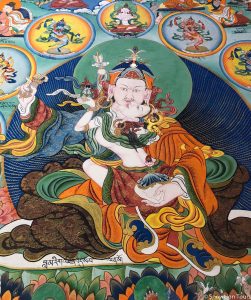 In the morning drive to Sheldrak cave, which is a key pilgrimage site for Tibetans, in particular those of the Nyingma Lineage. After all, this was Guru Rinpoche’s first meditation cave in Tibet. It was here that he bound the demonic influences under oath. Many masters gained here realizations like Orgyen Lingpa and others. Once visit Yarlung Sheldrak cave, we will drive back to Tsethang and visit Yumbu Lhagang Palace which known as the first palace ever built in Tibet. This Palace first built for King Nyatri Tsempo. This magnificent building is located in Yurlung Vally and only 12km from Tsethang city. Tsethang considers the 3rd largest city in Tibet and considered the cradle of Tibetan civilization. It is also a historic palace perched atop a craggy hill. You can either hike up or ride a horse up to the Palace. Stay in Tsethang.
In the morning drive to Sheldrak cave, which is a key pilgrimage site for Tibetans, in particular those of the Nyingma Lineage. After all, this was Guru Rinpoche’s first meditation cave in Tibet. It was here that he bound the demonic influences under oath. Many masters gained here realizations like Orgyen Lingpa and others. Once visit Yarlung Sheldrak cave, we will drive back to Tsethang and visit Yumbu Lhagang Palace which known as the first palace ever built in Tibet. This Palace first built for King Nyatri Tsempo. This magnificent building is located in Yurlung Vally and only 12km from Tsethang city. Tsethang considers the 3rd largest city in Tibet and considered the cradle of Tibetan civilization. It is also a historic palace perched atop a craggy hill. You can either hike up or ride a horse up to the Palace. Stay in Tsethang.
Day 9: Tsethang – Mindroling Monastery – Tsurphu monastery. (Overnight in Tsurphu Monastery guesthouse).
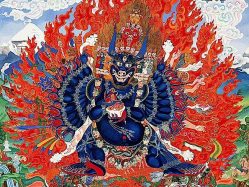 In the morning drive to Tsurphu via Mingdroling monastery. Mindroling Monastery is one of the six major monasteries of Nyingmapa school in Tibet. It was founded by Rigzin Terdak Lingpa in 1676. Mindroling means “Place of Perfect Emancipation”. Afterwards, continues drive north to Tsurphu, along the way, you will cross Lhasa Kyichu River and beautiful villages of Duilong. Once you drive inside the valley all the way to the end, the Tsurphu Monastery will appear on your right. This Monastery is the traditional seat of the Karmapa and belongs to Karma Kagyu or Black Hat lineage. Tsurphu Monastery was founded in 1159 and was built in the middle of a valley with high mountains surrounding the complex. Above the monastery are traces of rock paintings and some meditation retreats. A kora (circumambulation) trail takes visitors on a beautiful 2-3 hour hike that overlooks the Tsurphu valley. Stay at the Tsurphu Monastery guesthouse.
In the morning drive to Tsurphu via Mingdroling monastery. Mindroling Monastery is one of the six major monasteries of Nyingmapa school in Tibet. It was founded by Rigzin Terdak Lingpa in 1676. Mindroling means “Place of Perfect Emancipation”. Afterwards, continues drive north to Tsurphu, along the way, you will cross Lhasa Kyichu River and beautiful villages of Duilong. Once you drive inside the valley all the way to the end, the Tsurphu Monastery will appear on your right. This Monastery is the traditional seat of the Karmapa and belongs to Karma Kagyu or Black Hat lineage. Tsurphu Monastery was founded in 1159 and was built in the middle of a valley with high mountains surrounding the complex. Above the monastery are traces of rock paintings and some meditation retreats. A kora (circumambulation) trail takes visitors on a beautiful 2-3 hour hike that overlooks the Tsurphu valley. Stay at the Tsurphu Monastery guesthouse.
Day 10: Tsurphu Monastery – Namtso Lake (Overnight in Namtso Lake)
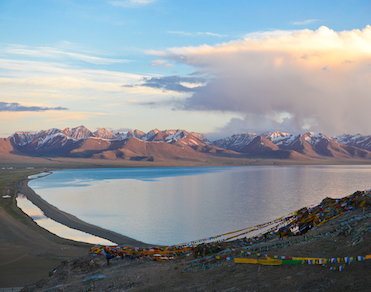 We continue drive 200km north to the Namtso Lake. You can see Tibetan Nomads with livestock along the way. Today we will reach the highest point of this trip which is Nagen-la pass (5130m above sea level). Then descending down the Lake. Namtso Lake lies at altitude of 4700 m. There is a bird sanctuary in the eastern corner of the lake which is home for Black-necked cranes and some other wildlife. There is a small monastery on the peninsula which stretches into the southeastern of the lake called Tashi Dor Gompa. This Monastery has a number of hermitage caves including one cave said to be of the famous Indian master Padmasambhava and his consort Yeshe Tsogyel. We recommend to climb up on the rock hill behind the guesthouse. From here you can also enjoy the view of the lake and snow covered mountain Nyenchen Tanglha (7162 m). If time permits, there is a 1.5-2 hour pilgrimage circuit around the rocky mountain which is another thing to do.
We continue drive 200km north to the Namtso Lake. You can see Tibetan Nomads with livestock along the way. Today we will reach the highest point of this trip which is Nagen-la pass (5130m above sea level). Then descending down the Lake. Namtso Lake lies at altitude of 4700 m. There is a bird sanctuary in the eastern corner of the lake which is home for Black-necked cranes and some other wildlife. There is a small monastery on the peninsula which stretches into the southeastern of the lake called Tashi Dor Gompa. This Monastery has a number of hermitage caves including one cave said to be of the famous Indian master Padmasambhava and his consort Yeshe Tsogyel. We recommend to climb up on the rock hill behind the guesthouse. From here you can also enjoy the view of the lake and snow covered mountain Nyenchen Tanglha (7162 m). If time permits, there is a 1.5-2 hour pilgrimage circuit around the rocky mountain which is another thing to do.
Day 11: Namtso Lake – Reting Monastery – Tedrum Nunnery (Shambhala Source Hotel)
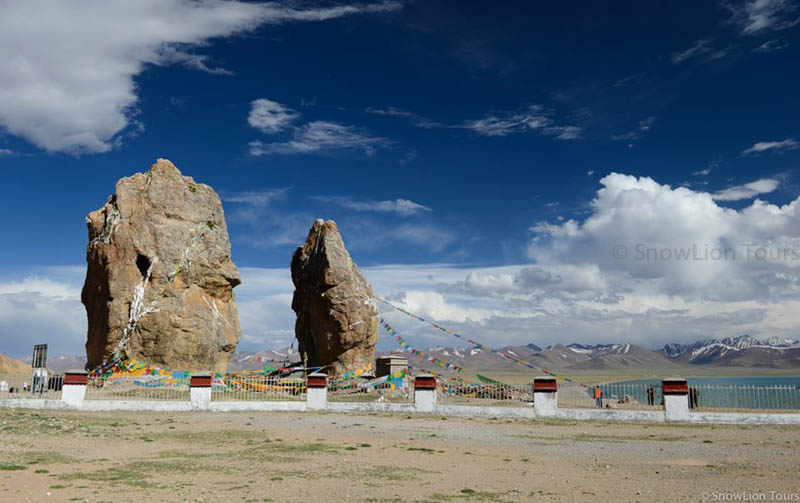
Reting monastery is the first Kadampa monastery built by Atisha’s main student Dromtonpa in 1056. Reformed by Tsongkhapa, it was changed into Gelug monastery in the later year. Reting Monastery is situated in 150 km from Lhasa at the elevation of 4225 m sea level. It is the seat of Reting Rinpoche – the lineage started in 18 century when the 7th Dalai Lama appointed his tutor as abbot of Reting. Reting monastery became one of the most important and one of the richest monasteries in all Tibet. It came also to be one of the most influential in political and spiritual terms. The monastery was nearly completely destroyed in 1960. Nowadays it is reconstructed within several temples surrounded by the juniper trees which are very rare to be seen in this part of Tibet. It is believed that these juniper trees have been originally sprung from the Dromtonpa’s hair. Afterwards, you will drive to the backside of the mountain ridge where Tedrum Nunnery is located. Tucked away in a small, idyllic mountain village, there are hot springs at the bottom of nunnery and rolling green hills to climb and explore. Though it’s a popular place to visit in the summer, try hiking around a little and you might find yourself helping a nun milk yaks, or make an elderly nun burst into laughter, helping carry a nun some firewood!
Day 12: Day hike to Tidro retreats (Kiri Yangdzong) (Shambhala Source Hotel)
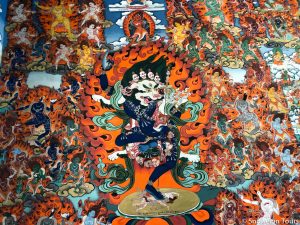 You may need to start this day’s hiking early in the morning. The pilgrim’s route directed to the Padmasambhava caves high in the mountains above Tidro. The full Kora takes 10-12 hours. There is a 15m long subterranean channel through the river passes. Legends say that Padmasambhava himself created the tunnel in order to drain a lake inhabited by malignant water spirits by throwing his Vajra at the ridge above. And the mark of the Vajra can still be seen in the rock in the tunnel entrance. He then created the hot spring for future practitioners. Here you’ll visit Eshe Tsogyal’s secret cave Kiri Yangzong (5060 m).
You may need to start this day’s hiking early in the morning. The pilgrim’s route directed to the Padmasambhava caves high in the mountains above Tidro. The full Kora takes 10-12 hours. There is a 15m long subterranean channel through the river passes. Legends say that Padmasambhava himself created the tunnel in order to drain a lake inhabited by malignant water spirits by throwing his Vajra at the ridge above. And the mark of the Vajra can still be seen in the rock in the tunnel entrance. He then created the hot spring for future practitioners. Here you’ll visit Eshe Tsogyal’s secret cave Kiri Yangzong (5060 m).
Day 13: Tedrum Nunnery – Drak Yerpa Meditation Caves – back to Lhasa. (Hotel 3*)
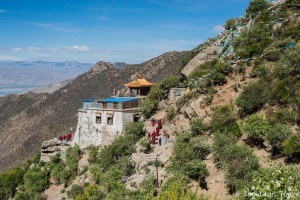
In the morning drive to Drak Yerpa. A hermitage about 30km north of Lhasa, Drak Yerpa is one of the holiest cave retreats in central Tibet. Carved out of the side of a mountain, it is very peaceful and beautiful here. You need to follow small trails to find and explore these caves. The drive passes through a small village and you can explore the many caves at this site. You might see some pilgrims meditating in the caves! Afterwards drive back to Lhasa.
Day 14: Lhasa – Shugseb nunnery – hike to Gangri Thökar – back to Lhasa. Free evening for shopping and restaurants. (Hotel in Lhasa 3* )
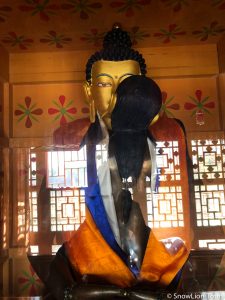 In the morning drive to Shugseb – nunnery located thirty miles from Lhasa on the slopes of Mount Gangri Thökar, a site associated with the great master Longchenpa. It was founded by the great female master Lochen Chönyi Zangmo. Afterwards, hike to Mt Gangri Thokar. literally ‘The White Skull Snow Mountain’, is a famous peak in Central Tibet, in the hermitage of Orgyen Dzong, that Longchenpa taught and composed many of his most important writings. Centuries later, Lochen Chönyi Zangmo founded Shugsep Nunnery on the mountain’s lower slopes.
In the morning drive to Shugseb – nunnery located thirty miles from Lhasa on the slopes of Mount Gangri Thökar, a site associated with the great master Longchenpa. It was founded by the great female master Lochen Chönyi Zangmo. Afterwards, hike to Mt Gangri Thokar. literally ‘The White Skull Snow Mountain’, is a famous peak in Central Tibet, in the hermitage of Orgyen Dzong, that Longchenpa taught and composed many of his most important writings. Centuries later, Lochen Chönyi Zangmo founded Shugsep Nunnery on the mountain’s lower slopes.
Day 15: Depart Lhasa.
Say goodbye to Tibet!
For more info about Guru Rinpoche, please check out here – Guru Rinpoche / Padmasambhava




